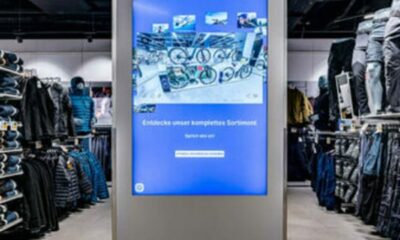Fashion
Mixed update from JD Sports details progress in key markets but UK weakness
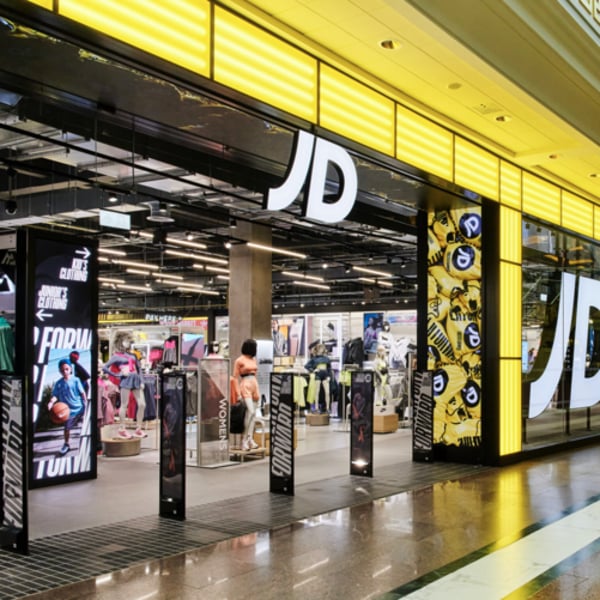
Published
August 27, 2025
Retail giant JD Sports Fashion has issued a trading update for Q2 and the first half and while like-for-like (LFL) sales dipped in both periods, ‘organic’ sales rose (organic for JD refers to currency-neutral sales factoring out acquisitions). Importantly too, it said its new giant Manchester store is performing strongly.
And while many headlines chose to focus on the negatives, it’s perhaps significant that the firm’s share price rose almost 3% as the markets opened.
The company itself chose to focus on the improved LFL sales trend for Q2 in North America but said Europe and the UK combined were affected by “tough prior year comparatives” due to last year’s Euro 2024 football tournament (clearly the Women’s Euros this year didn’t have the same impact).
But it said it saw a good performance in apparel, although footwear was softer “given end of cycle for key product lines”.
JD also said it made “strong progress” against its strategic objectives across its omnichannel customer proposition, store footprint, supply chain and North America operations, and costs and cash are being “well controlled”.
It now expects FY26 profit before tax and adjusting items (PBTAI) to be in line with current market expectations, “albeit we continue to assess potential impacts from US tariffs”.
The numbers
So, let’s look at the actual figures for Q2 and H1. For the second quarter – the 13 weeks to 2 August – group LFL sales fell 3% but they rose 2.2% on an organic basis. That divided into a 2.3% LFL drop for North America but a 4.8% organic rise; a 1.1% LFL dip for Europe and a 5.4% organic increase; a 6.1% LFL drop for the UK and a 4.5% organic drop in its home market; and a 0.3% LFL increase for Asia pacific with a 9.3% organic rise there.
And for the first half – the 26 weeks to 2 August – group LFL sales fell 2.5% while they rose 2.6% organic. Again, looking at individual regions North America was down 3.8% LFL and up 3.1% organic; Europe dipped 0.4% LFL and rose 5.9% organic; the UK dropped 3.3% LFL and fell 1.8% organic; and Asia pacific was down 2.4% LFL and up 6% organic.
It’s clear from this that the UK remains a problem market for the company and that performances are much better in North America, Europe (even with the aforementioned tough comparatives) and the still-very-small Asia Pacific.
Looking at these regions in more detail for the second quarter, the company said it had plenty of activity in North America, its largest regional market (accounting for 36% of Q2 sales). DTLR and Shoe Palace took over the operations of 198 City Gear stores on 1 June; its new JD/Finish Line e-commerce platform went live in H1; and Shoe Palace’s Morgan Hill distribution centre (west coast of the US) went live in May, with JD/Finish Line planning to go live at the end of this year. This will make Morgan Hill the JD Group’s first multi-fascia distribution centre, “unlocking significant improvements in speed to store replenishment and online fulfilment”.
Its performance in the market was “resilient”, led by JD and DTLR, against strong Q2 comparatives. And it saw a “good performance in newer footwear lines (following a shift in the product launch schedule from Q1, as previously highlighted), partially offsetting the impact of key product lines being at the end of cycle”.
It also saw a “strong performance in apparel, albeit a smaller proportion of our category mix in North America”, and a “much improved overall online performance, supported by a better online range and focused marketing”.
In Europe, its group Heerlen distribution centre (in the Netherlands) “continues to ramp up”, and is on track to launch automation this year (for stores, with online to follow in H1 next year).
Europe is its second-largest regional market at 34% of sales with the UK third on 26% of sales. That said, the UK is hugely significant given that it contains a much smaller number of consumers than North America or Europe and therefore punches above its weight per head.
Both Europe and the UK faced difficult comparisons with last year when the Men’s Euros football tournament boosted sales of replica kits and saw healthy in-store cross-selling. Last year also saw strong sales of athletic footwear for women that were difficult to replicate.
But it talked up a “resilient underlying performance in apparel, supported by a strong product offer” and said footwear performance in both regions was supported by newer footwear lines (especially performance-based) and value-oriented footwear.
It also said it maintained in-store pricing disciplines in both regions. Controlled price investments were made in the online offer to boost its competitive position and increase engagement with online customers. This was reflected in higher European online traffic and conversion in Q2.
As for openings globally for the first half as a whole, it opened new JD fascia flagship stores in the UK (Trafford Centre, Manchester), North America (Las Vegas and Vancouver) and Asia Pacific (Melbourne), with “positive early learnings and strong results in particular from the Trafford Centre store”.
View from the top
CEO Régis Schultz said of all this: “We are making strong progress in developing our omnichannel customer proposition, store footprint and supply chain, and we are controlling our costs and cash effectively.
“Across our regions and fascias, in general we see a resilient consumer, albeit very selective on their purchases. We therefore remain cautious on the trading environment going into H2.
“We are well placed to continue growing our market share in the key growth regions of North America and Europe, and confident about the medium-term growth prospects for our industry.
“Reflecting this, we are reaffirming our commitment to enhanced shareholder returns, and announcing today a new £100 million share buyback following the successful completion of the first £100 million programme last month.”
Copyright © 2025 FashionNetwork.com All rights reserved.
Fashion
Chanel debuts A$AP Rocky as ambassador, with Margaret Qualley teaser video
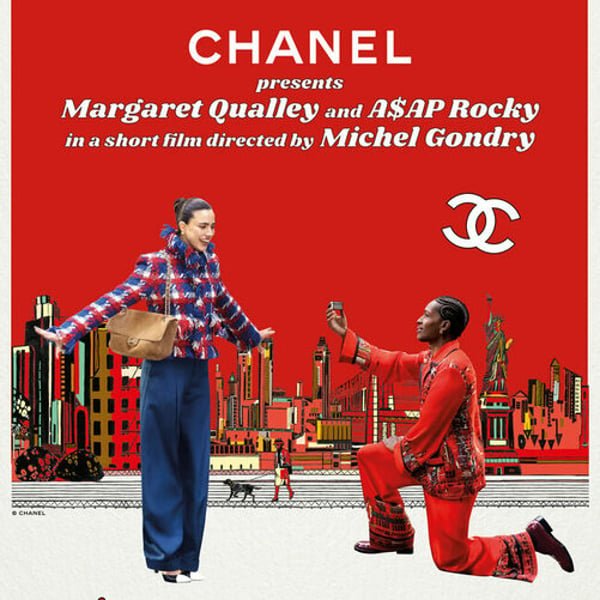
Published
November 30, 2025
Chanel has appointed A$AP Rocky as a new brand ambassador and debuted his tenure with a teaser video shot in New York co-starring Margaret Qualley.
The video appeared Sunday just 48 hours before Chanel’s couturier Michel Blazy will stage his debut collection of Métiers d’Art also in New York. It’s a unique line first created by Karl Lagerfeld that highlights the unique stable of artisans Chanel has assembled in such skills as embroidery, pleating, glove-making and costume jewelry.
Directed by Michel Gondry, the 2.49-minute short opens with the stars waking up in the bed of a walkup apartment in Williamsburg. Where, after a quick peck on her lover’s forehead, Qualley disappears into a tiny bathroom, before magically changing out of her blue nightie and reappearing in a red, white and blue houndstooth Chanel jacket, paired with pale blue pants, her hair in a chignon.
https://www.youtube.com/watch?v=live
No sooner than she has disappeared, than A$AP leaps out of bed and descends the tenement building’s outside steel stairs and sets off on a mad dash after Qualley. This leads to him swimming under the Brooklyn Bridge, and running north through the Lower East Side, before finally catching up with Qualley at Astor Place station. All the action backed up my moody ambient music courtesy of Le Motel.
In between, the rapper and husband of Rihanna, manages to find time to stop in two discount stores to acquire pants and a blazer. Arriving just in time, to genuflect onto one knee, and hold out a small white Chanel box, containing one assumes a diamond engagement ring, at the station entrance. The sight of which leads the actress to leap into the air in paroxysm of joy, before the happy couple march arm and arm back into the subway.
And off one assumes to attend the Métiers d’Art show, which will be revealed on Tuesday, 8 p.m. NYC time.
Copyright © 2025 FashionNetwork.com All rights reserved.
Fashion
Canada’s Lululemon revamps commercial strategy with new global leader
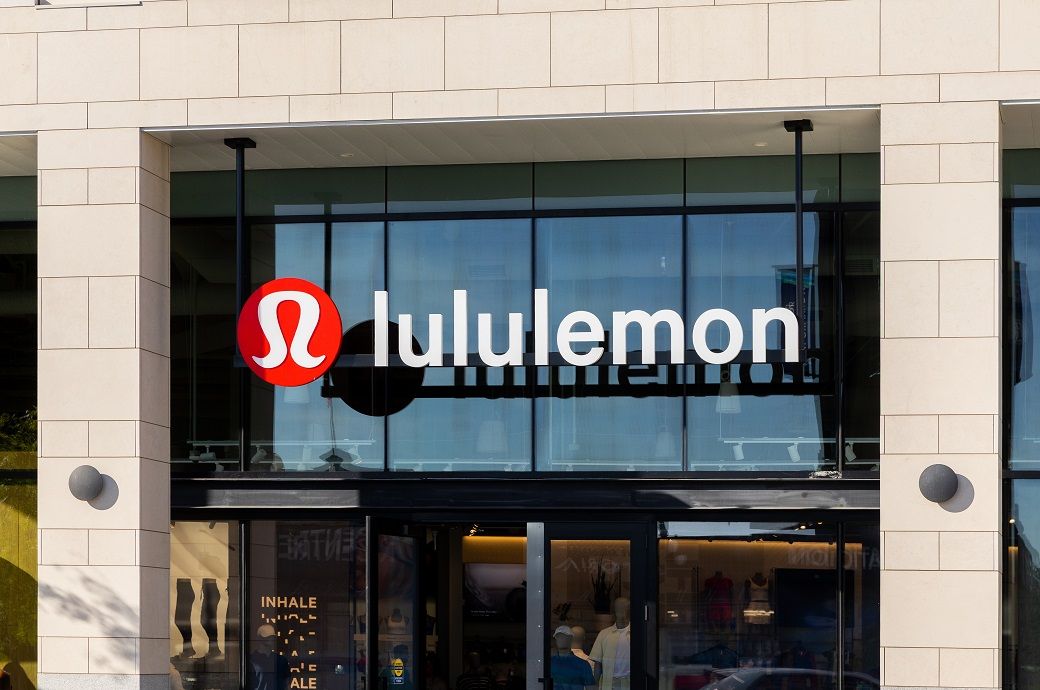
Ms. Burgoyne joined lululemon in 2006 and became the company’s first President in 2020. Throughout her tenure, she has assumed roles of increasing responsibility and led the North America business through periods of rapid growth and expansion.
Lululemon Athletica has announced that Celeste Burgoyne, president of the Americas and global guest innovation, will leave at the end of December 2025 after 19 years with the brand.
The company will consolidate regional leadership and has appointed André Maestrini as president and chief commercial officer, giving him global oversight of stores, regions, digital channels and commercial strategy.
“We are grateful for Celeste’s leadership and significant contributions to lululemon’s business and culture over the past 19 years. She has been instrumental in growing our footprint in the Americas, creating high-quality guest experiences, and mentoring our teams across the organization,” said Calvin McDonald, Chief Executive Officer, lululemon. “I deeply appreciate her partnership and friendship, and we wish her all the best in the future.”
“My time at lululemon has been both inspiring and rewarding beyond belief,” said Ms. Burgoyne. “I am so proud of what we have accomplished as an organization since I joined in 2006 and know the team will take the company to even greater heights in the years to come. I look forward to continuing to support the brand as a lifelong fan.”
In conjunction with this announcement, lululemon has made the decision to consolidate regional leadership across the company and appoint André Maestrini as President and Chief Commercial Officer, effective immediately. Mr. Maestrini will continue to report directly to Mr. McDonald.
In this newly created role, Mr. Maestrini will provide integrated oversight of all of lululemon’s regions, stores, and digital channels globally. He will also oversee lululemon’s global commercial strategy with a focus on continued market expansion, revenue generation, and accelerating best practice sharing, across all regions including North America.
Mr. Maestrini joined lululemon in 2021 as Executive Vice President of International. In his current role, he has overseen lululemon’s operations in EMEA, APAC, and China Mainland, and has helped to more than quadruple lululemon’s international revenues.
“André has demonstrated a proven ability to unlock opportunities, advance our global expansion, and deliver growth across multiple markets,” said Mr. McDonald. “Leveraging operational discipline, deep guest insights, and extensive brand-building experience, André is the ideal person to lead our business across all markets, including North America, as we remain focused on delivering value for our guests, employees, and shareholders.”
Before joining lululemon, Mr. Maestrini spent 14 years at adidas in various senior roles across the globe. During this time, he served in a number of General Manager positions where he helped grow the company’s global sports categories and regional markets. Prior to adidas, Mr. Maestrini held marketing roles at The Coca-Cola Company, Danone, and Kraft Jacobs Suchard.
Note: The headline, insights, and image of this press release may have been refined by the Fibre2Fashion staff; the rest of the content remains unchanged.
Fibre2Fashion News Desk (RM)
Fashion
India’s growth expected to be robust despite external headwinds: IMF
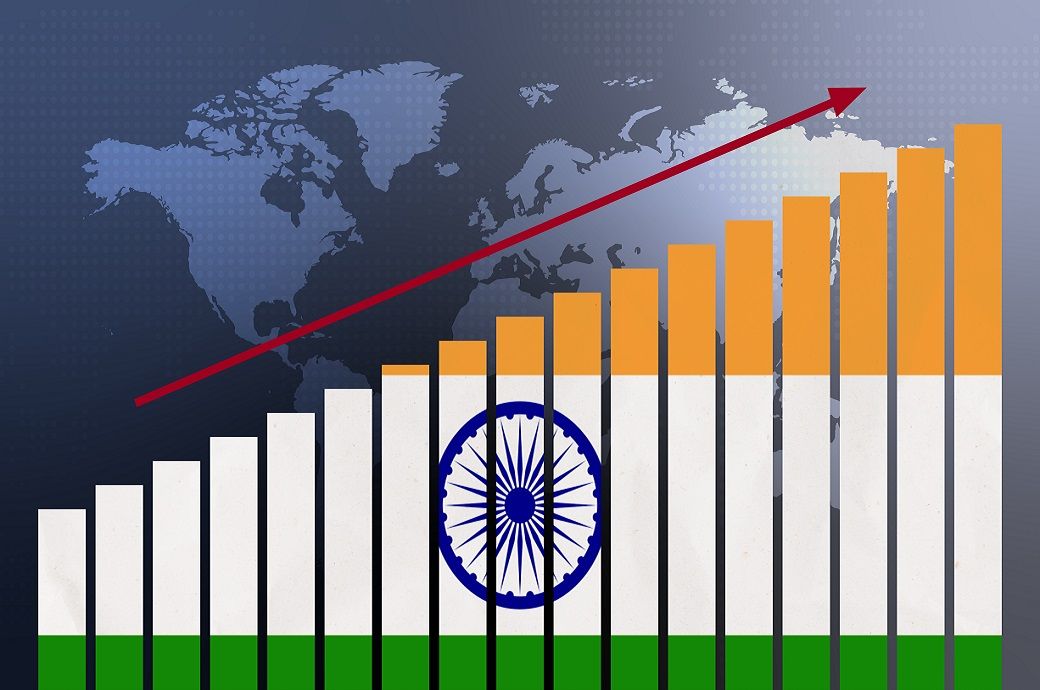
Under the baseline assumption of prolonged 50-per cent US tariffs, India’s real gross domestic product (GDP) is projected to grow at 6.6 per cent in fiscal 2025-26 (FY26) before moderating to 6.2 per cent in FY27, the IMF said.
The reform of the goods and services tax (GST) and the resulting reduction in the effective rate are expected to help cushion the adverse impact of tariffs.
Despite external headwinds, India’s growth is expected to be robust, backed by favourable domestic conditions, the IMF has said.
Assuming prolonged 50-per cent US tariffs, FY26 real GDP may grow at 6.6 per cent before moderating to 6.2 per cent in FY27.
Further deepening of geo-economic fragmentation could lead to tighter financial conditions, higher input costs and lower trade, FDI and economic growth.
Headline inflation is projected to remain well contained, reflecting the one-off effect of the GST reform and continued benign food prices, it remarked in a release.
Looking ahead, India’s ambition to become an advanced economy can be supported by advancing comprehensive structural reforms that enable higher potential growth, the IMF noted.
There are significant near-term risks to the economic outlook. On the upside, the conclusion of new trade agreements and faster implementation of structural reform domestically could boost exports, private investment and employment.
On the downside, further deepening of geo-economic fragmentation could lead to tighter financial conditions, higher input costs and lower trade, foreign direct investment (FDI) and economic growth.
Unpredictable weather shocks could affect crop yields, adversely impact rural consumption and reignite inflationary pressures, the IMF added.
Fibre2Fashion News Desk (DS)
-

 Sports7 days ago
Sports7 days agoWATCH: Ronaldo scores spectacular bicycle kick
-

 Entertainment7 days ago
Entertainment7 days agoWelcome to Derry’ episode 5 delivers shocking twist
-

 Politics7 days ago
Politics7 days agoWashington and Kyiv Stress Any Peace Deal Must Fully Respect Ukraine’s Sovereignty
-

 Business7 days ago
Business7 days agoKey economic data and trends that will shape Rachel Reeves’ Budget
-

 Tech5 days ago
Tech5 days agoWake Up—the Best Black Friday Mattress Sales Are Here
-

 Fashion7 days ago
Fashion7 days agoCanada’s Lululemon unveils team Canada kit for Milano Cortina 2026
-

 Politics7 days ago
Politics7 days ago53,000 Sikhs vote in Ottawa Khalistan Referendum amid Carney-Modi trade talks scrutiny
-

 Tech5 days ago
Tech5 days agoThe Alienware Aurora Gaming Desktop Punches Above Its Weight










